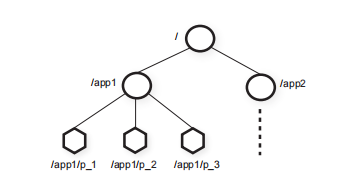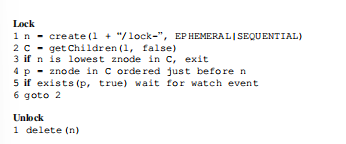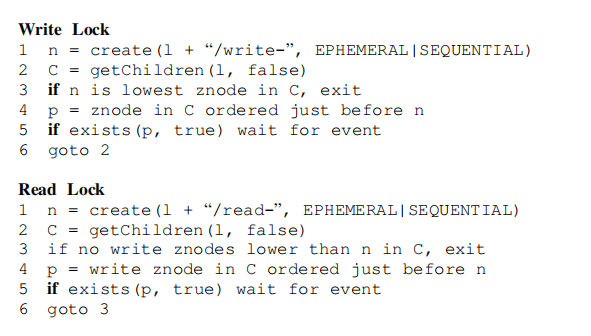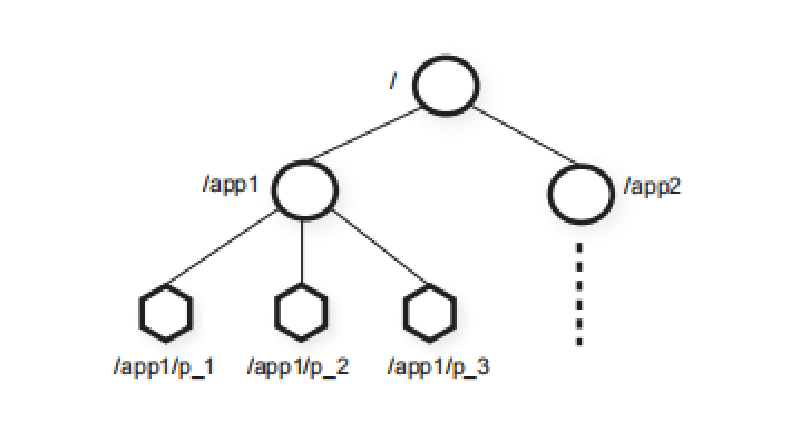概览
ZooKeeper是实现分布式协调的服务。
我首先通过ZooKeeper 详解 - 知乎 (zhihu.com)了解了以下Zookeeper是什么,该如何使用,这样就对接下来底层实现要干什么有了一定的了解。
The ZooKeeper service

zookeeper使用分层结点的形式提供数据结点。这些结点就是客户端通过API进行操作的数据对象。
Znode有两种类型:
Regular: Clients manipulate regular znodes by creating
and deleting them explicitly;
Ephemeral: Clients create such znodes, and they ei
ther delete them explicitly, or let the system remove
them automatically when the session that creates
them terminates (deliberately or due to a failure).
有普通或暂时的两种结点。
Additionally, when creating a new znode, a client can
set a sequential flag. Nodes created with the sequen
tial flag set have the value of a monotonically(单调的) increas
ing counter appended to its name. If n is the new znode
and p is the parent znode, then the sequence value of n
is never smaller than the value in the name of any other
sequential znode ever created under p.
这就是说,客户端可以给创建结点一个顺序。比如有父结点P,然后有一个单调递增的计数器,比如P下有结点Z1,Z3,Z5,下一个创建的顺序结点编号一定大于5。(我认为这里不一定是连续的计数器,可能有临时结点获取计数器,然后在会话结束时消失)。
ZooKeeper implements watches to allow clients to
receive timely notifications of changes without requir
ing polling.
客户端在使用watch标识进行操作时(get),如果得到的值在之后被改变,客户端会被通知,但是不会知道修改后的值。就是说,服务器告诉客户端:“你之前查找的值被修改了,但是修改成多少我不说”。
Watches are one-time triggers associated with a session;
watches只会被触发一次(通过一次更改触发),并且是关联当前会话的,如果会话被关闭了,watch也应该被注销。
Session events, such as connection loss events, are also sent
to watch callbacks so that clients know that watch events
may be delayed.
有点没理解到这个so that clients know that watch events may be delayed. 的delayed指什么意思
ZooKeeper guarantees
- Linearizable writes: 保证写操作线性化
- FIFO client order: 同一个客户端发送的请求保证先到先服务。
这里的线性性是A-linearizability (asynchronous linearizabil
ity。异步线性化。允许一个客户端在同一时刻,拥有多个未完成的操作。满足异步线性化的系统也具有线性化的特点。
分布式锁
- Simple Lock
The simplest lock implementation uses “lock files”.
The lock is represented by a znode. To acquire a lock,
a client tries to create the designated znode with the
EPHEMERAL flag. If the create succeeds, the client
holds the lock. Otherwise, the client can read the zn
ode with the watch flag set to be notified if the current
leader dies. A client releases the lock when it dies or ex
plicitly deletes the znode. Other clients that are waiting
for a lock try again to acquire a lock once they observe
the znode being deleted.
就是不同的client去尝试创建一个特定的临时结点(当成锁)。如果创建成功,就获取到了锁。此时其他结点就不能创建这个结点了。但是当这个锁结点被主动删除或者随客户端会话结束而消失(临时结点的特性),watch会通知正在监视的所有客户端,然后客户端再去争抢创建这个锁。
缺点就是有惊群效应:假如有五个client在等待锁,并且被watch通知,这个时候就都会去尝试获取锁。
- Simple Locks without Herd Effect

简单来说,就是在一个指定结点下形成了加锁的队列。按照队列加锁。一个client想要获取锁,只watch自己前面的请求,当前面的请求消失,再被唤醒。
感觉这里就是一个条件变量。类似于之前在数据库中实现的锁表。
- Read/Write Locks

通过队列实现RW锁。
ZooKeeper实现
The replicated database is an in-memory database con
taining the entire data tree. Each znode in the tree stores a
maximum of 1MB of data by default, but this maximum
value is a configuration parameter that can be changed in
specific cases. For recoverability, we efficiently log up
dates to disk, and we force writes to be on the disk media
before they are applied to the in-memory database.In
fact, as Chubby [8], we keep a replay log (a write-ahead
log, in our case) of committed operations and generate
periodic snapshots of the in-memory database.
使用WAL记录。并且保留了REDO日志。以及有生成快照的功能。
写请求被转发到Leader,其余的都可以在follower上处理。
ZooKeeper使用Zab传播消息。这里我的理解是:ZooKeeper构建在一种类似于RAFT的分布式日志系统上,可以通过WAL保证事务的持久性和一致性。
- ZXID:Zookeeper的zxid - 简书 (jianshu.com) ZXID由两部分组成:term和事务编号
客户端在W时,会获取一个ZXID,比如写put(a,value),获得一个zxid=1133(确保该写操作已经被commit),下一次在get时,会携带该zxid,已确保访问的服务器至少有新的数据。
